My Jacob Lawrence
IT WAS 1993 and my neighbor Beth Turner, curator at the Phillips Collection near Dupont Circle, took on a big project reuniting all 60 works in Jacob Lawrence’s Migration Series, which depicts the mass movement of African Americans from the rural South to the urban North between World War I and World War II.

Artist Jacob Lawrence and his wife, Gwendolyn Knight.
Half of the small rectangular panels produced in New York when the artist was first making a name for himself (1941) had been at MOMA and half at the Phillips. I had a background in art history and with both kids in school, a lot of time on my hands. Over the next few months the latent dream of working in an art museum came with an undreamed of benefit — becoming friends with a living legend and his loving partner-wife. While Beth toiled over how to borrow the fragile art, get permission to reproduce the images, find suitable authors for the catalogue texts, schedule interviews for the video — all very interesting — I was the one who was available to drive the artist and his wife Gwen around from taping appointment to drinks at the Fairfax, and even dinner at our house. A point of mild but amusing contention between us friends, this quality time and access.
Anyway, I will never forget one treasured exchange: Edging our mini station wagon up Massachusetts Avenue, the Lawrences sitting together in the back, I observed that the roses my husband Jim had sent me earlier in the week for my birthday — and that the Lawrences had seen at the beginning of the week’s exhibition festivities– had started to dry up and fade from bright yellow to a golden tan. Shamelessly bringing up the subject of color and fading nature to a pair of aesthetes, I allowed as how I planned to save the petals. “Beautiful. Things are beautiful in all phases of life,” said Gwen. “Sure are. Yes they are,” answered Jake.
And I remember another memorable exchange with the Lawrences, this time Jake taking the lead. Perhaps musing about the sometimes difficult narrative subject matter of much of his work — like a fading rose, adversity could be meaningful and worthy to tackle in any expressive art form (and life) Jake would claim, saying more than once during our friendship, “the Beauty is in the struggle.”
To see how Lawrence captured struggle beautifully, see the the artist’s Struggle series, illustrating scenes from American history, from the Revolutionary War through the great westward expansion of 1817. It’s at the Phillips Collection through Aug. 9, 2015.
–Deba Leach
Deba Leach, a former Washington, D.C., art dealer, is a graduate student in American art at the University of Iowa.
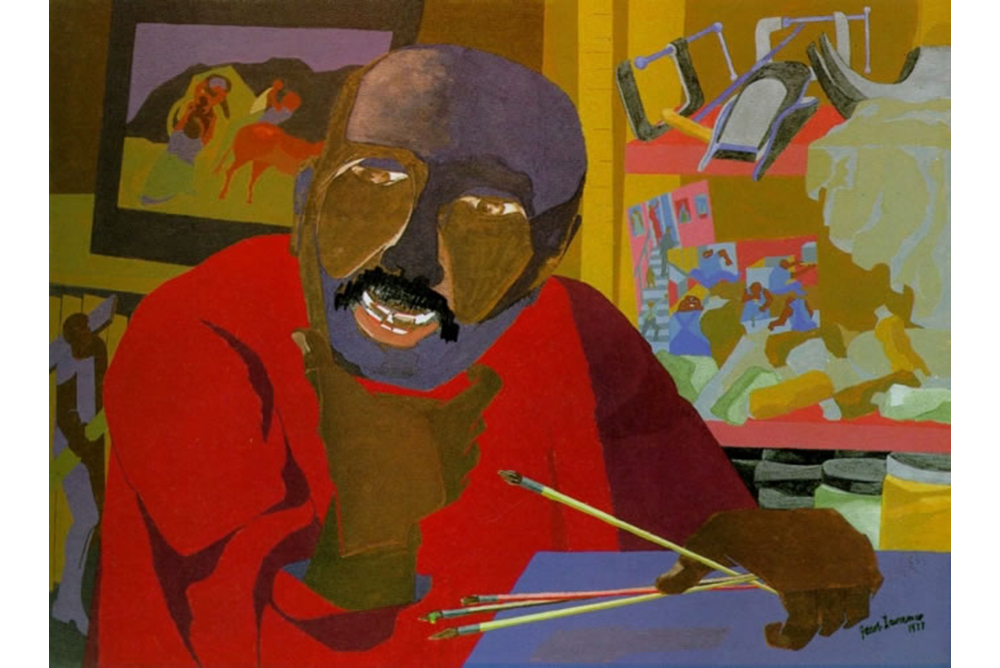
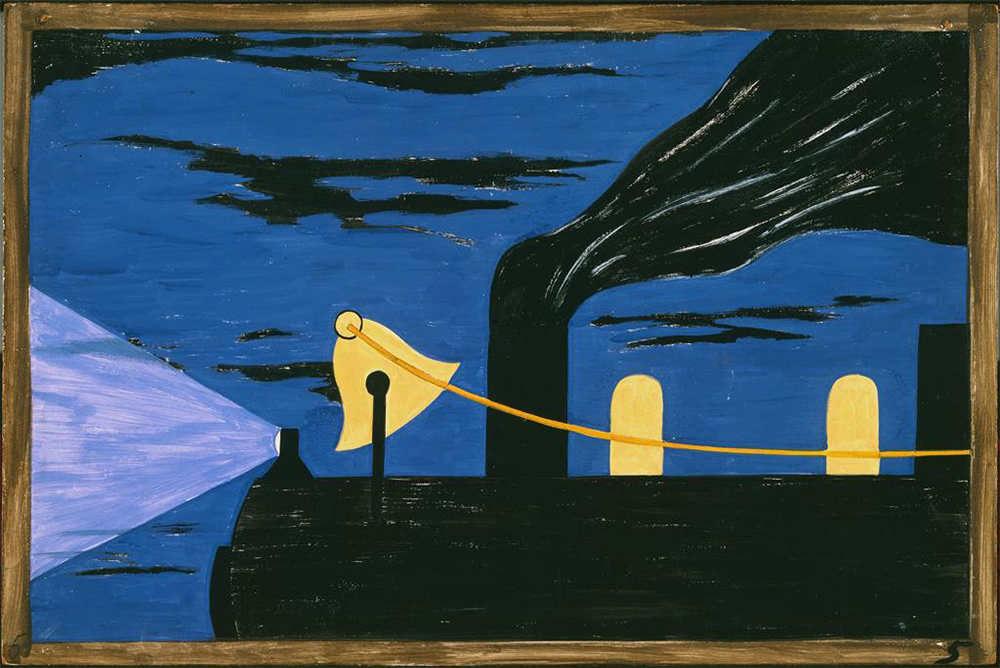
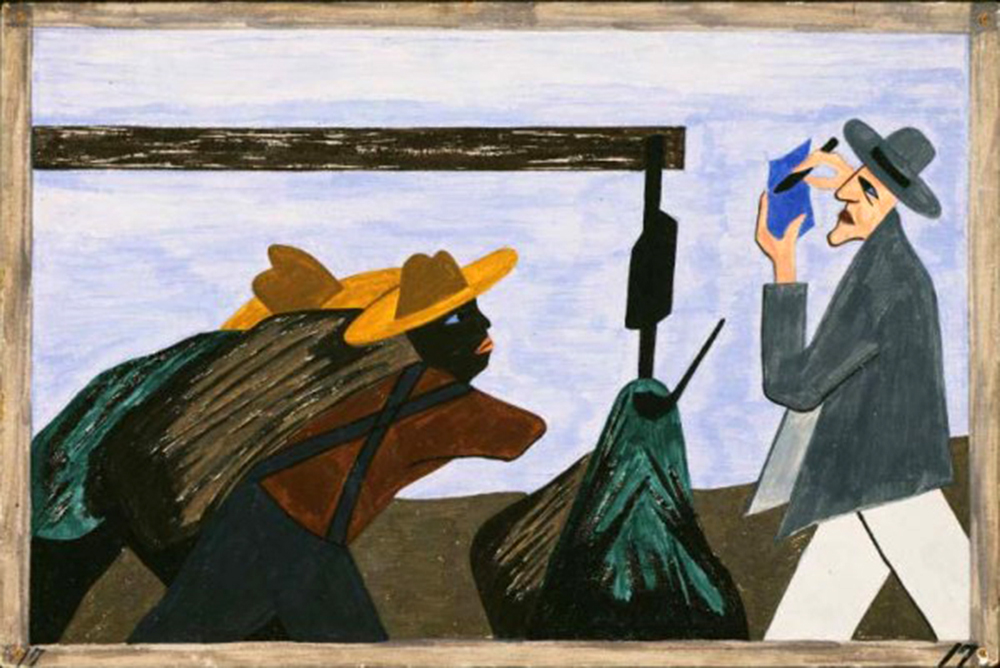
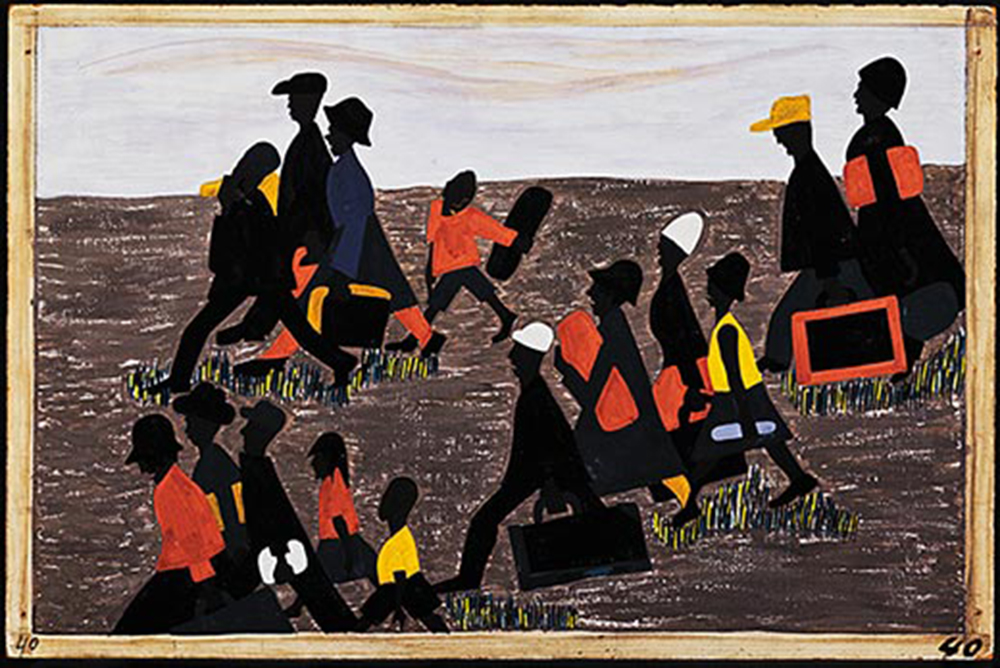

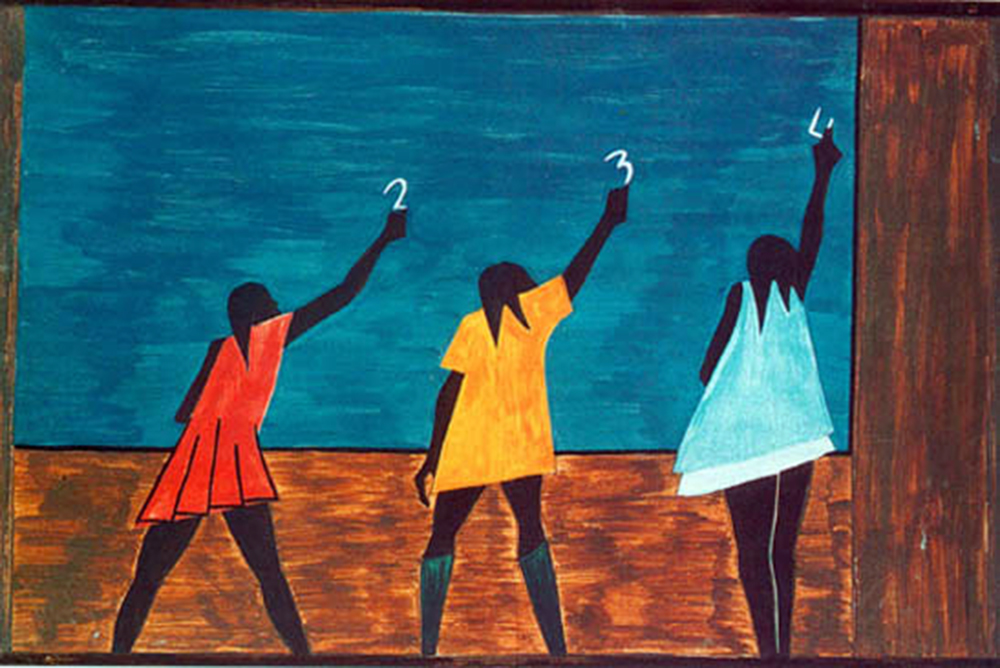


Thanks for sharing these poignant and compelling insights from a great artist. As if with just one stroke of his brush, his spirit and character are revealed.